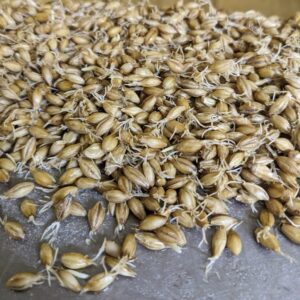Australia is renowned for producing a reliable supply of high-quality barley in a contaminant-free climate. Australian barley is highly sought after by the malting, brewing, distilling and feed industries worldwide.
Malt barley

Australia represents up to 30% of the world’s malt barley trade
Feed barley

Australia represents 20% of the world’s feed barley trade.
Production
- Australia produces high quality two-row barley.
- Annual barley production averages over 9 million tonnes.
- Barley is grown widely in Australia, from southern Queensland to Western Australia.
- Around 4 million hectares of barley are planted in Australia each year.
- Barley is Australia’s second largest grain crop, behind wheat.
Uses
Australian malted barley is used for:
- Beer
- Shōchū, whiskey and other distilled spirits
- Malt extract
- Malt vinegar
- Confectionery (e.g. Maltesers)
- Flavoured drinks (e.g. Milo)
- Breakfast cereals

Find out more about Australian barley at the Australian Export Grains Innovation Centre (AEGIC).
What is malt and how is it made?
Malt is a cereal grain, usually but not limited to, barley, that has been allowed to germinate for a short time prior to being dried.
Malt is a natural product created from the malting process, where raw barley is steeped, germinated and then kilned to change the raw barley seed into a friable biscuit-like texture. This is then easily crushed in a mill in preparation for the sugar conversion that takes place. The malting process converts around 10% of the carbohydrate in the raw grain into fermentable sugars via the germination process. The malting process prepares the grain for more modification that will be undertaken in the brewhouse or in other production processes.
The process of malting involves a multitude of biochemical changes during the germination and growth of the barley grain. Amino acids and reducing sugars combine in different ways to develop colour and flavour compounds.
Malt extract is a natural flavouring and colouring that is high in protein and natural sugars and is a major natural energy source. In addition to its use in brewing and distilling, it is also widely used in baking, confectionery, breakfast cereals, malt beverages, dairy products, condiments and as a caramel substitute.
